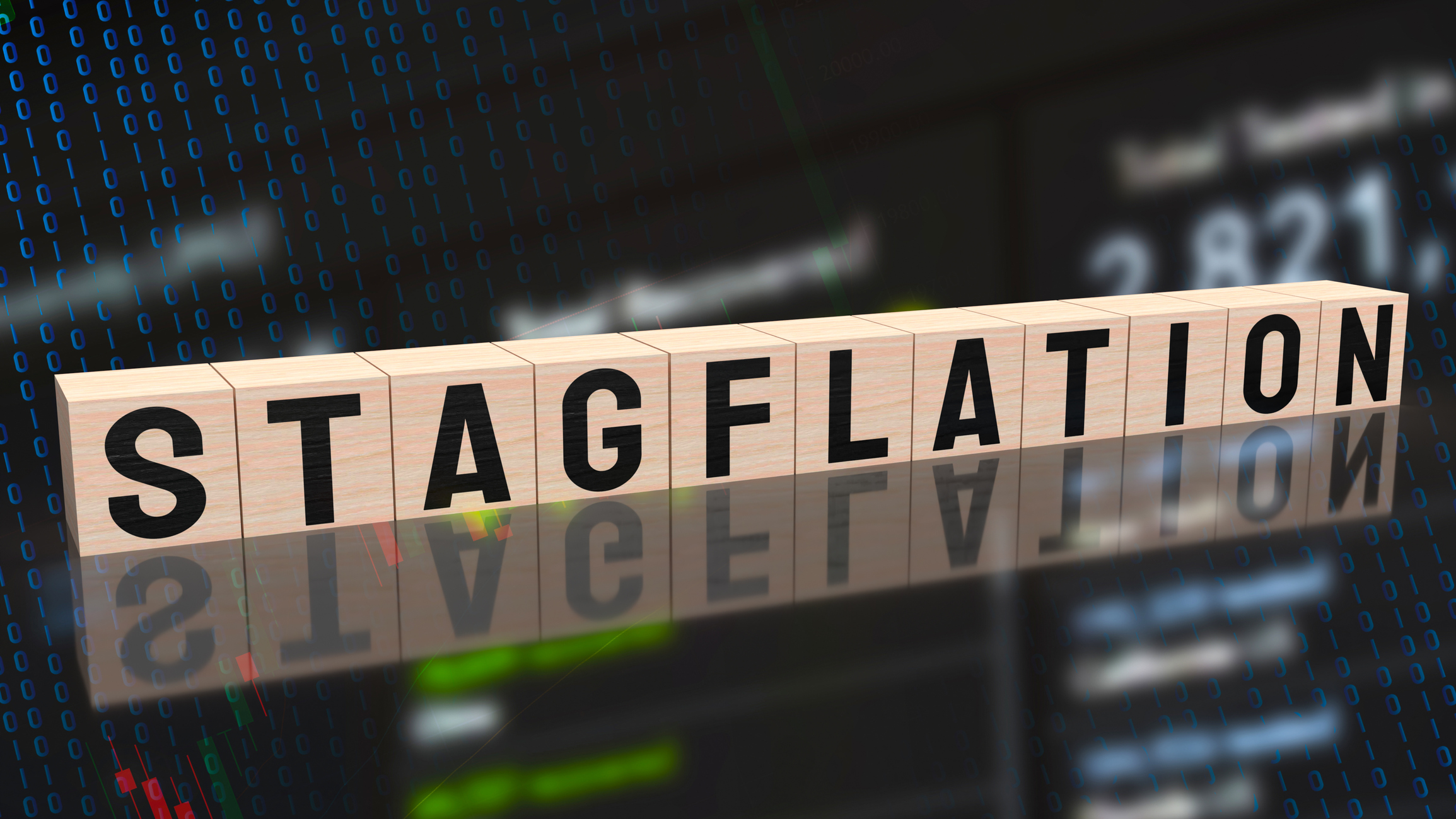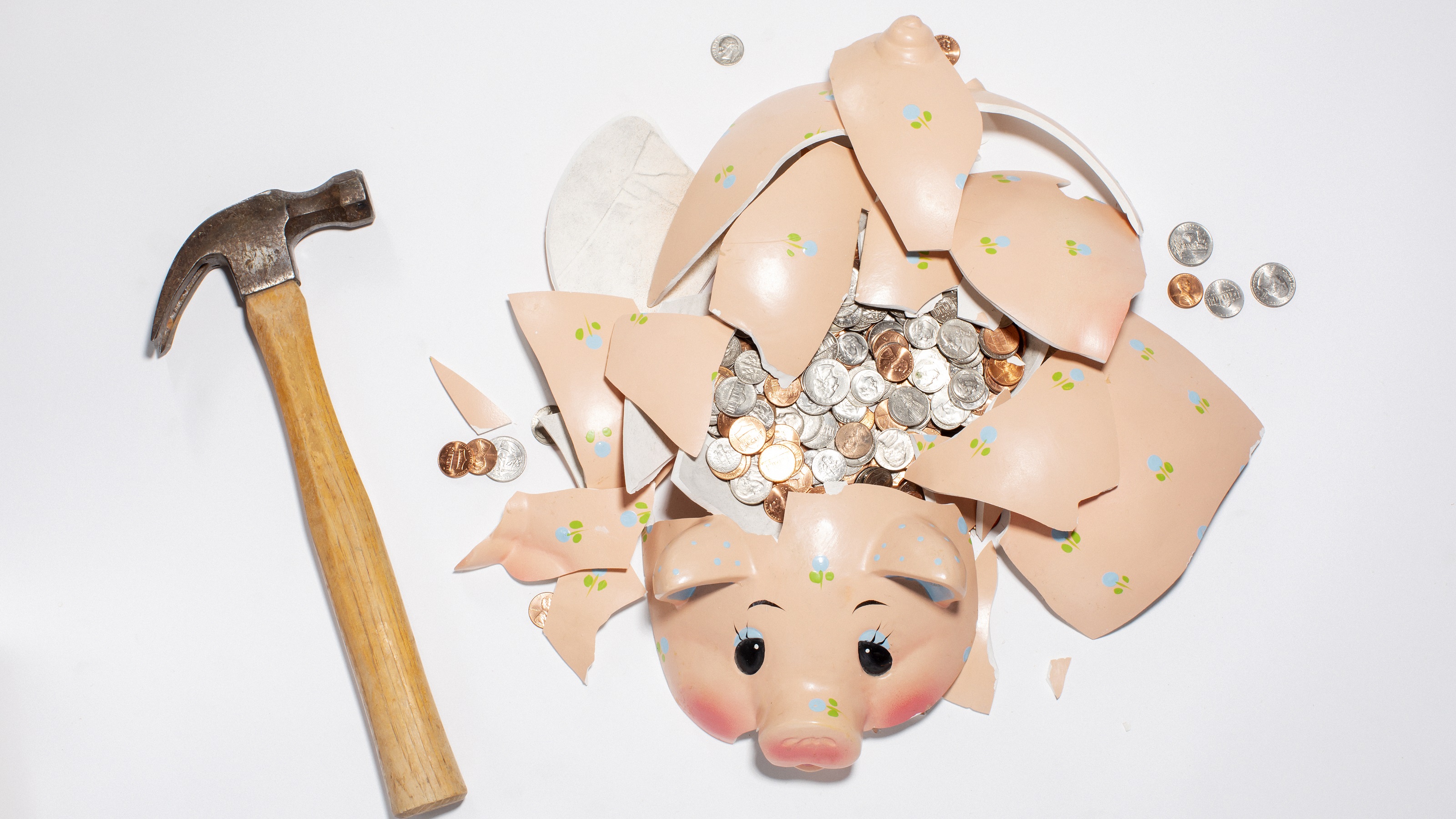What Is Stagflation and How Can Investors Prepare?
Stagflation occurs when economic growth slows and the unemployment rate spikes and can create a challenging environment for investors.


The 1970s are known for many things, but the one economists are most likely to recall is stagflation, the combination of high inflation and unemployment that can cripple an economy and investor portfolios.
"Stagflation is a serious risk for investors because of its persistence," says Michael Rosen, chief investment officer and co-founder of Angeles Investments. "That is, stagflation is rarely a transitory event and it erodes portfolio values over time, often marked by years." Comparatively, the average length of all recessions since World War II is about 10 months.
"In one of the many ironies or paradoxes of investing that are counterintuitive, investors are well-advised to ignore important geopolitical events, such as a war or terrorist attack, as markets recover quickly from those events, and focus instead on the underlying drivers of the economy," he says. "Stagflation, in that sense, is more impactful on portfolios than a one-off crisis."

Sign up for Kiplinger’s Free E-Newsletters
Profit and prosper with the best of expert advice on investing, taxes, retirement, personal finance and more - straight to your e-mail.
Profit and prosper with the best of expert advice - straight to your e-mail.
What is stagflation?
There's an easy way to remember the definition of stagflation: Just think stagnant plus inflation. In other words, stagflation is stagnant economic growth plus high inflation, Rosen says. Economists also often add high unemployment to the recipe for stagflation.
High inflation is fairly easy to understand as it's nearly impossible to ignore. When inflation soars, prices rise. Anytime you drive by a gas station with its prices listed, you'll be reminded of the impacts of inflation.
Stagnant economic growth is a bit harder to comprehend as it can be less immediately apparent. Stagnation is often defined as a period in which gross domestic product (GDP) is either growing very slowly or declining, says Frank Brochin, chief investment officer of Family Office Practice at The Colony Group.
"Normally these features should contradict each other: high inflation is often the byproduct of strong economic activity and a strong labor market," says Collin Martin, fixed income strategist at Charles Schwab. "Likewise, inflation tends to slow as economic growth slows since spending would likely slow."
This destructive combination can put households and businesses in a tight spot as incomes fail to rise as fast as prices increase, he says.
What causes stagflation?
"Stagflation is often caused by adverse supply-side shocks, for example a sudden increase in the price of essential commodities" Brochin says. This was the case in the 1970s when world food shortages met increased energy costs.
Supply shocks can also be caused by labor restrictions which reduce output and raise unemployment and wages while causing prices to rise as businesses push the higher costs of labor onto consumers.
And sometimes the Federal Reserve is to blame for stagflation. For example, an easy monetary policy where interest rates are being lowered combined with a tight fiscal policy can lead to wage retaliation if taxes remain too high. As workers demand higher wages, businesses may reduce employment and pass the higher costs onto consumers by raising prices.
What happens during stagflation?
"During a period of stagflation, businesses struggle to grow due to slowing economic activity, and cannot easily reduce costs due to rising input prices," Brochin says. This leads to layoffs and fewer job opportunities, causing unemployment to rise.
"At the same time, inflation reduces the purchasing power of households and consumer confidence declines, further impacting economic growth," he says. "In such economic conditions, businesses and individuals face difficulties in planning and making investment decisions."
Stagflation is also a challenging environment for policymakers to combat. The Federal Reserve is tasked with keeping prices stable and unemployment low. This becomes particularly difficult when the primary tool for combatting the first exacerbates the second.
To combat inflation, the Federal Open Market Committee (FOMC) can raise interest rates, but doing so also causes households to cut back on spending because savings rates rise. This reduced spending erodes businesses' bottom lines and can reduce hiring, thus unemployment rises. So when stagflation looms, the Fed is caught juggling a double-edged sword.
Is stagflation worse than recession?
All of this is to say that stagflation can be worse than a recession. "Stagflation is more difficult to manage than a recession, and can have a longer, more negative impact on individuals, businesses and overall economic stability," Brochin says. It tends to persist longer than a recession because it is so much harder to combat.
During a recession, policymakers can turn to expansionary monetary and fiscal policies to stimulate the economy, but these same policies exacerbate the inflationary side of stagflation. And since inflation is generally experienced by a wider share of the public than job loss, as Steven Wieting, chief investment strategist at Citi Global Wealth Investments, points out, this can lead to a great deal of hurt.
"Stagflation also has a more negative impact on society than a recession because it compounds the job losses, reduced income, and business failures common in a recession with inflation, which erodes purchasing power and reduces the real value of wages and savings," Brochin says.
How to invest during stagflation
Stagflation can also present a challenging investment environment. "Stocks have historically delivered high enough returns to beat inflation, but they often need economic growth to do that," Martin says. When businesses are struggling to turn a profit, earnings expectations fall and with them, stock prices.
"Stagflation also poses a risk to bonds since the fixed interest rates they offer might not be high enough to offset the loss of buying power given the high rate of inflation."
With both stocks and bonds underperforming, where's an investor to turn during periods of stagflation? The answer is the same one investors are often given: Stay the course and diversify.
"Investors might be tempted to make drastic changes to their portfolios if they are concerned about stagflation, but we continue to believe that diversification and taking a long-term investing approach are key," Martin says. "We suggest folks stay invested in the market – focusing on investments that are in line with their risk tolerance and objectives." He adds that investors should also stay focused on high-quality picks.
If you want more tactical advice, consider overweighting defensive stocks in sectors such as consumer staples, utilities, energy and healthcare, Brochin says. Businesses in these sectors tend to have more stable earnings, which can provide some protection against stagnant economic growth and inflation. "In particular, we believe investors should favor companies with pricing power that are able to pass increased costs to consumers."
Fixed-income investors can turn to shorter-duration bonds and Treasury inflation-protected securities (TIPS), which adjust their principal to match inflation, to minimize the impact of rising inflation.
"TIPS are better suited for retirement accounts since you are taxed on accrued interest that you don't actually receive until maturity," Rosen says, adding that investors should avoid nominal bonds, "whose yield will be eaten away by higher inflation."
Is the U.S. heading for stagflation?
With inflation reaching a 40-year high in 2022 and unemployment reaching the highest rate since the Great Depression in 2020, it's natural to be concerned about stagflation in the U.S. However, both of these indicators have improved, with inflation ebbing from 6.6% in September 2022 to 3.0% in January 2025. Unemployment, at 4.0%, is hovering near its lowest level in decades.
While the COVID-19 pandemic and Russia's war with Ukraine posed potentially stagflationary supply-side shocks for the world, Wieting says the impact is diminishing and many experts agree the chances of stagflation occurring in the U.S. are similarly fading.
"After surging in 2020 on government income support for the COVID shock, the U.S. broad money supply is falling for the first time since the late 1940s," Wieting says. "Headline consumer price increases have already slowed sharply, but it takes two full years for monetary policy actions to be fully felt in consumer prices."
Not everyone is so optimistic, however. Unfavorable demographic trends caused by an aging population that leaves fewer people in the workforce alongside increased taxes and regulations could cause economic growth to stagnate, Rosen says.
And Mark Hackett, chief market strategist at Nationwide Investment Management Group, says that stagflation is a major market risk. "If growth slows and inflation reaccelerates, the Fed could find itself stuck in a box without a clear exit strategy," he adds. "If anything is going to derail markets today, it will overwhelmingly be stagflation."
But one measure seems to support the idea that stagflation should not be a top-of-mind concern for investors at the moment. In the 1970s, economist Arthur Okun developed an index to measure stagflation that is calculated by adding the unemployment rate to the annual inflation rate. "That this index is widely referred to as the 'misery index' shows how painful stagflation is," Brochinm says.
The misery index reached nearly 22 in 1980. The current misery index reading is 7.
Related content
Get Kiplinger Today newsletter — free
Profit and prosper with the best of Kiplinger's advice on investing, taxes, retirement, personal finance and much more. Delivered daily. Enter your email in the box and click Sign Me Up.

Coryanne Hicks is an investing and personal finance journalist specializing in women and millennial investors. Previously, she was a fully licensed financial professional at Fidelity Investments where she helped clients make more informed financial decisions every day. She has ghostwritten financial guidebooks for industry professionals and even a personal memoir. She is passionate about improving financial literacy and believes a little education can go a long way. You can connect with her on Twitter, Instagram or her website, CoryanneHicks.com.
-
 Financial Security vs Financial Freedom: What's the Difference?
Financial Security vs Financial Freedom: What's the Difference?Having the ability to pivot without worrying about financial support is where financial security becomes financial freedom.
By Justin Donald Published
-
 Retired and Worried About a Recession? Six Ways to Prepare
Retired and Worried About a Recession? Six Ways to PrepareRetirees can plan for a near-term recession with a range of strategies, from small investment changes to significant lifestyle hacks.
By Maurie Backman Published
-
 Going Through Probate? How to Find the Right Attorney
Going Through Probate? How to Find the Right AttorneyJust having the skills and experience to do the job isn't enough. The probate attorney you hire needs to have the right temperament for your particular case.
By John R. Silva, Esq. Published
-
 Widow's Penalty: Three Ways to Protect Your Finances
Widow's Penalty: Three Ways to Protect Your FinancesHigher Medicare premiums, smaller Social Security payments, bigger tax bills … Financial changes can hit hard when a spouse dies. How to counter the blow.
By Ashley Terrell, IAR Published
-
 Four Ways Your Phone Can Help You Weather Market Volatility
Four Ways Your Phone Can Help You Weather Market VolatilitySmartphone apps can help investors make healthy decisions and maintain a disciplined investment approach — even when emotions try to steer them off course.
By Marco De Freitas Published
-
 Stock Market Today: Tariff Pause Triggers 3,000-Point Dow Rally
Stock Market Today: Tariff Pause Triggers 3,000-Point Dow RallyThe bond market is sending concerning signals as the Trump administration executes its rapid reordering of global trade relationships.
By David Dittman Published
-
 Stick to the Plan: Don't Panic During Economic Uncertainty
Stick to the Plan: Don't Panic During Economic UncertaintyTake a breath and step back. Focus on a solid fiscal foundation to stabilize your investments during stock market volatility.
By Eric Lahaie, CFS®, RICP® Published
-
 How Inflation Affects Your Finances and How to Stay Ahead
How Inflation Affects Your Finances and How to Stay AheadThe cost of goods and services is certain to rise over time, making it essential to have a financial plan that will help you keep pace.
By Kyle D. Sikes Published
-
 Now's a Great Time to Become a Financial Adviser: Here's Why
Now's a Great Time to Become a Financial Adviser: Here's WhyThere's a growing need for financial advisers. Why not take on a role that offers earning potential and work-life balance and helps change lives?
By John Roberts Published
-
 Stock Market Today: Tariff Talks Drive Another Up-and-Down Day
Stock Market Today: Tariff Talks Drive Another Up-and-Down DayTrade war negotiations are happening, but the "fear gauge" is gyrating, and investors, traders and speculators are still searching for signs of a bottom.
By David Dittman Published